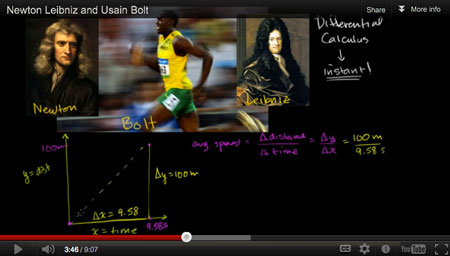Flipping the Classroom

There has been a lot of buzz recently about "flipping the classroom" and not just within the world of education. The flipped classroom has been covered by nearly every media outlet, and yet many people are still uncertain about what it is, what it does, and why it can be useful and transformative.
What’s the Flip?
Flipping the classroom reframes the role of the teacher: it moves traditional in-class functions, such as lectures, into the home, and moves traditional homework assignments, such as problem sets, into the classroom.
Students are asked to view "guided lessons" at home — generally through video or online tutorials — and then to come to class to work through the material in a more dynamic way. Students view lessons at their own pace at home — reviewing as much as they need to without the pressure to instantly "get it" — and teachers engage more meaningfully, individually, and personally in the classroom.
Why Flip?
Flipping the classroom allows for more interesting and active lessons for both students and teachers. It changes the typical classroom routine and increases the energy level. It takes the teacher out of the position of stagnant lecturer, with a one-size-fits-all approach, into a much more active role.
The teacher is able to become more of a mentor and coach, working with students where they are with the material, whether that means encouraging some to forge ahead, or helping those who are stuck on a concept. It means much more one-on-one time with students, effectively obtaining the elusive advantage of a lower teacher-to-student ratio.
For students, flipping means freedom to move at their own pace, all working through material to the point of mastery. Students can now do this without fear of embarrassment for needing to review the lesson once, twice, or even ten times (and others can move on to more advanced material that their classmates may not be ready to tackle).
Students are also better able to help one another. And, depending on the platform involved in the flip, there is often solid and accessible data for teachers and students to use to assess how the system is working. In short, flipping the classroom can be a very liberating practice for everyone involved.
Chief of Flipping
The biggest name in flipping the classroom is Salman Khan, the founder of Khan Academy, and the voice behind its online video lessons. Recently featured on 60 Minutes, in a TED Talk, and in an Edutopia Video, as well as on CNN, NPR, and in newspapers around the world, Khan Academy seeks to “change education for the better by providing a free world-class education to anyone anywhere.”
Khan Academy currently hosts some 3,000+ videos, ranging from arithmetic to differential calculus, as well as disciplines as disparate as art history and macroeconomics. You name it and there’s probably a Khan Academy video for it. Each video is 7-14 minutes long, and the "feel" is intentionally rudimentary, designed to be as if a tutor, or a good friend, is sitting right next to you. Khan’s face never appears in the videos, just his voice and his handwriting as he guides you through lessons and problems.
Khan didn’t set out to be a teacher or an education innovator. A businessman by training and background, he was working at a hedge fund in Boston when he first got started making instructional videos.
At the time, he was looking for a way to tutor his cousin Nadia, who was struggling in math. They had a few tutoring sessions by phone and then on a whim Khan posted something for Nadia on YouTube. She liked it, learned from it, and the idea took off.
Other people started looking at Khan’s online lessons, including Bill Gates, who started to use them to help his own kids. Before long, Khan secured funding for his non-profit organization, and Khan Academy has been growing by leaps and bounds ever since.
Khan Academy is currently making its way into the classroom in a more official way. The Los Altos School District in northern California is running a Khan Academy pilot program in two 5th grade and two 7th grade math classes.
So far, it seems to be working extremely well for both students and teachers. Khan and his team have developed a "dashboard" for teachers, which allows them to track all of their students. Teachers are able to view how many videos each student has watched, which problems they’ve completed, and where they are getting stuck.
The dashboard is immensely valuable and displays real-time feedback as well as patterns of progress over time. Using Khan Academy this way liberates teachers to spend the rest of their time in class for more hands-on, project-based learning.
Flipping Limitations?
Critics of flipping the classroom worry about those kids who don’t have computer and internet access and also say that students will eventually lose interest in "repetitive drilling."
"We’re not out to fight some political battle," Khan says. "We’re out to build stuff that’s useful." With millions of people worldwide accessing the site every month, it is clear that Khan and his team are succeeding. And so are the students.
Article by Lauren Frazier



